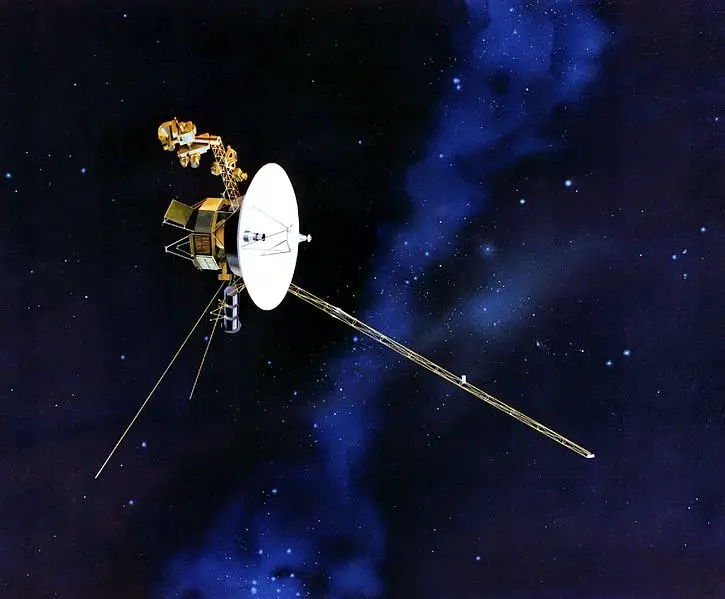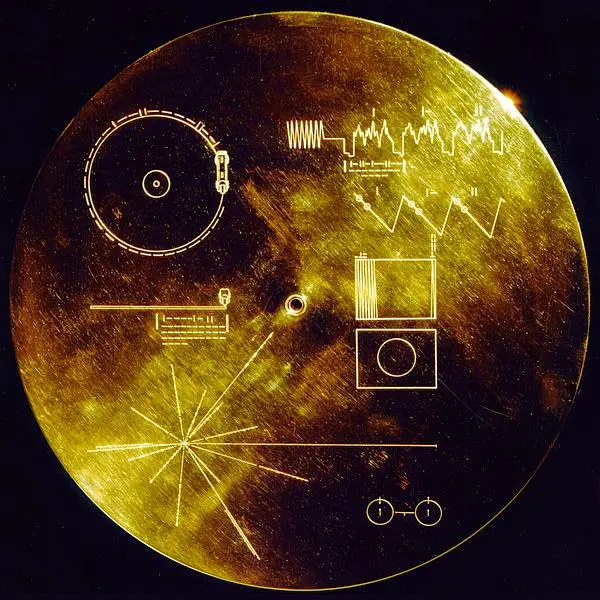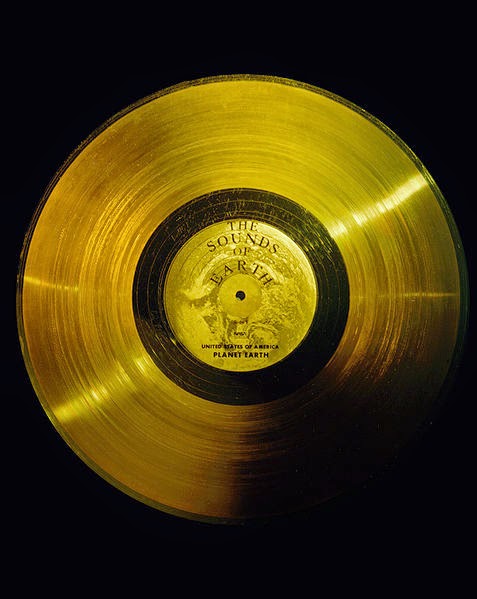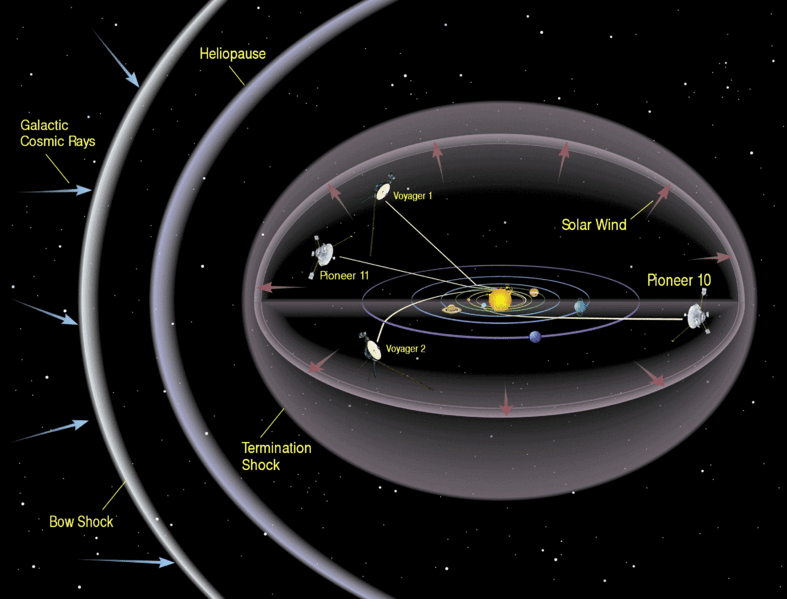Way back in 1977, Voyager 1 was one of two probes launched by NASA, with its primary mission being the exploration of Jupiter and Saturn. It made a famous fictional return to Earth as an alien cloud in 1979’s Star Trek, as the mysterious, all-powerful entity known as V’Ger. But where is the real Voyager 1 right now?
Way back in 1977, Voyager 1 was one of two probes launched by NASA, with its primary mission being the exploration of Jupiter and Saturn. It made a famous fictional return to Earth as an alien cloud in 1979’s Star Trek, as the mysterious, all-powerful entity known as V’Ger. But where is the real Voyager 1 right now?
Voyager 1 actually launched about a month after its twin probe Voyager 2 in 1977. Both spacecraft took different flight paths and were traveling at different speeds. The probes were aided by an alignment of the planets that offered them a gravitational assist as they passed each planet. This particular alignment only occurred every 176 years. Both carry golden records that contain sounds and images that portray life here on Earth in the hopes that some other life form would be able to decipher them.
Voyager 1 reached Jupiter in April of 1978. It arrived at Saturn a year later in 1980. After Voyager 1 completed its initial mission of the exploration of Jupiter and Saturn, the mission was extended to study Uranus and Neptune. In 1998, Voyager 1 raced past the previous record holder for distance away from Earth, Pioneer 10, which was launched on March 2, 1972. Communications from Pioneer 10 were lost in 1995. Since that time, Voyager 1 has blown past the outer planets and is now the farthest man-made object away from Earth.
Right now at the time of this writing, Voyager 1 is 148 Astronomical Units away from Earth, or if you can wrap your head around it, 13.8 billion miles. It’s currently traveling at 38,026 miles per hour or 10.56 miles per second. It takes commands from NASA to the spacecraft and back a total of 41 hours and 7 minutes to be completed, and its mission elapsed time stands at 43 years, 11 months, and 26 days. Voyager 2 has a slightly longer mission elapsed time since it was launched prior to Voyager 1, but it has traveled 2.3 billion miles less than Voyager 1 during that time.
NASA announced on September 12, 2013, that Voyager 1 had crossed the heliosphere, the region where interstellar gases push back against particles coming from the sun and where these particles begin to slow. This was the last boundary before it entered interstellar space, or the space within a galaxy not occupied by stars. Both Voyager 1 and Voyager 2 are now traveling through interstellar space.
There are only four instruments still operating on Voyager 1 as it continues to move farther from Earth; the Cosmic Ray Subsystem, the Low-Energy Charged Particles instrument, the Magnetometer, and the Plasma Wave Subsystem. Six other instruments have been turned off.
NASA estimates that the probe will have enough power to continue communicating until 2025 as the Voyager’s fuel for running the communications equipment, plutonium-238 dioxide, will have decayed too much to generate the required heat to keep them operating. When that happens, Voyager would have had an operational life of more than 48 years. But that won’t be quite the end to Voyager. NASA also estimates that it could remain in the range of the Deep Space Network until about 2036.
After that time, Voyager 1 will wander the galaxy for 40,000 years before it passes near another celestial body, a star in the Camelopardalis constellation which is moving toward the constellation Ophiuchus. Even after those many years, Voyager will still be over 1.6 light-years away from that star.
Sources: NASA (1), NASA (2), Smithsonian Magazine, Spaceflight Insider






